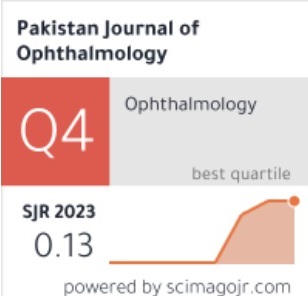Meibomian Gland Dysfunction
DOI:
https://doi.org/10.36351/pjo.v35i1.866Abstract
Dry eyes is a common, chronic condition that has a prevalence of about 5- 50%.1 According to the Dry Eye Workshop II report (DEWS II report), published in 2017, the updated definition of Dry Eye Disease is, “a multifactorial disease of the ocular surface characterised by a loss of homeostasis of the tear film, and accompanied by ocular symptoms, in which tear film instability and hyper-osmolarity, ocular surface inflammation and damage, and neurosensory abnormalities play etiological roles.” The Tear Film & Ocular Surface Society (TFOS) released their report on the international work on Meibomian Gland Dysfunction (MGD)2 in 2011, which defined MGD, classified it and considered it as the primary cause of dry eye disease worldwide. Previously dry eye disease was considered as an aqueous deficiency problem, but after this report by TFOS, there is a paradigm shift towards “not producing enough lipids to retain the tears that are being produced”. This has led to a huge impact on the treatment protocols which were previously focused on managing the sequelae and symptoms of dry eyes rather than targeting directly on the underlying cause, the MGD. It has now been accepted worldwide that dry eye occurs when the ocular surface system cannot adequately protect itself from the desiccating stress due to the lack of a healthy meibomian gland secretion. This article is mainly focussed on the Meibomian Gland Dysfunction, discussing the normal anatomy of the glands, how they are affected by disease, its implications on the ocular surface and finally, the various treatment strategies.
Key words: Blepharitis, Dry eyes, Meibomian gland dysfunction, blepharospasm.






